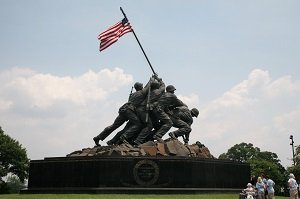 According to different estimates, from 5.5 to 20 million people fell victims to Japanese soldiers during the Second World War. Pacific War was a major military conflict in Asia which, like Germany’s invasion of Europe, affected not just the countries directly involved in the war, but those economically and politically related, including the remote USA, Canada, or Australia. It all started about at the same time and ended altogether in 1945.
According to different estimates, from 5.5 to 20 million people fell victims to Japanese soldiers during the Second World War. Pacific War was a major military conflict in Asia which, like Germany’s invasion of Europe, affected not just the countries directly involved in the war, but those economically and politically related, including the remote USA, Canada, or Australia. It all started about at the same time and ended altogether in 1945.
The term Pacific War itself refers to the war led mainly by Japan in Asia and the Pacific during the World War II. The beginning of the conflict, however, was in 1931 when Japan started its expansion to the West. First, it invaded Chinese Manchuria, and in 1937. The Japanese started a further attack on China and captured the capital, Beijing. The aim was to conquer a large territory and to move deeper into the continental Asia.
As a reaction to the unrest in the Far East, the Soviet Union signed a pact with China, in order to prevent Chinese from cooperating with Germany. While the Soviet Russia helped China in their struggle with Japan, the latter was continuing its war operations. This state of events served as a precursor for Japan to later search alliance with Nazi Germany.
Concerned by the state of things in the East of Asia, the US put an embargo first on fuel and oil, and then on mechanical parts and materials, such as iron and steel. That was in 1939, just about the time when the war started in Europe. The Second World War came in handy, as Japan had a chance to ally with Axis (national-socialist Germany and fascist Italy) on 27th September 1940. After the economic sanctions imposed on Japan by the USA, the Asian country occupied French Indochina to prevent the Chinese from importing fuel and arms.
The conflict in the Pacific spread beyond the region when the USA declared war on Japan following the Pearl Harbor attack on 7th December 1941. On December 8, the Pacific War set off in its full force when Japan invaded British Malaya. The States could not maintain neutrality in World War II and they declared war on Germany as well. The victorious hit in Pearl Harbor seemed to inspire Japan, and the country performed a series of fierce battles, which resulted in it claiming the territories, including the Dutch East Indies, Singapore, Burma, Malaya, and Philippines. Although the US managed to fight back, the Japanese forces controlled a significant part of China until 1943. The USA was not the only country which opposed the Japanese pressure on Asia. Australia, New Zealand, Great Britain, and Canada contributed to the battles as well.
On August 6th and 9th, the USA dropped two atomic bombs on Hiroshima and Nagasaki, respectively. As a result of both explosions and their aftermaths, over 120 thousand people died. After having suffered severely from the attacks, and following the pressure from the US, Soviet Union, and Great Britain, Japan surrendered in mid-September completely. Americans occupied the country, marking the resolution of the war.
The Second World War left its deep trace in Asia as well where Japan was the main aggressor. It invaded China and a range of other countries, including Burma, Malaya, and a large part of Indochina. The Pearl Harbour accident was the event that forced the countries like the US, Great Britain, and others put an end to the Japanese tyranny using, however, a very questionable method — dropping two atomic bombs.